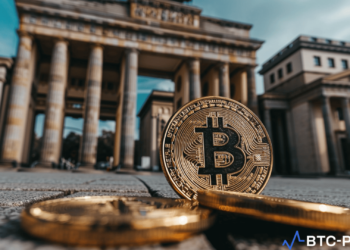Bitcoin Leads in Transaction Costs Over Ethereum
The cryptocurrency world is witnessing a notable shift as Bitcoin’s average daily transaction fees have surpassed those of Ethereum. This change is largely attributed to the increasing popularity of the Ordinals Protocol, which has revived interest in Bitcoin-based nonfungible token (NFT)-like assets.
A Sudden Spike in Fees
On November 20, Bitcoin’s average daily transaction fee was recorded at $10.34, overtaking Ethereum’s fee of $8.43, as per BitInfoChart. The peak in Bitcoin fees was observed on November 16, reaching $18.67, a six-month high, while Ethereum fees peaked at $7.90.
The Ordinals Effect
This surge is tied to the growing market demand for assets associated with the Ordinals Protocol. Following a period of reduced activity, Ordinals-based assets experienced a dramatic increase in late October. Data from Dune Analytics indicates that since October 24, over six million Ordinal assets have been created, incurring more than 800 BTC in fees – approximately $30 million – redistributed across the Bitcoin network.
Market Movements and Developments
The increase in Ordinals inscription activity coincides with the listing of ORDI, a leading BRC-20 token, on Binance on November 7. This event led to a surge in BRC-20 token trading, with ORDI’s price soaring by over 50% on the listing day.
Moreover, the Ordinals-based project Taproot Wizards announced a significant $7.5 million seed funding round on November 17, further fueling interest in the space.
Conclusion: Implications of the Fee Flip and Future Outlook
The recent developments in the Bitcoin and Ethereum ecosystems, driven by the resurgence of interest in Ordinals, signify a pivotal moment in the crypto landscape. The overtaking of Ethereum’s transaction fees by Bitcoin not only highlights the dynamic nature of the cryptocurrency market but also underscores the impact of innovative applications like NFT-like assets on blockchain networks.
The trend driven by the Ordinals Protocol suggests a growing appetite among users for diversifying the use cases of cryptocurrencies, particularly in the realm of digital collectibles and tokenized assets. This shift could lead to more blockchain networks adapting or developing similar functionalities, potentially sparking a new wave of innovation in the crypto space.
As the market continues to evolve, it’s crucial for investors, traders, and enthusiasts to stay informed about these trends and their long-term implications. The ongoing developments in the sector are likely to shape the future of digital transactions, asset tokenization, and the broader utility of blockchain technology.










